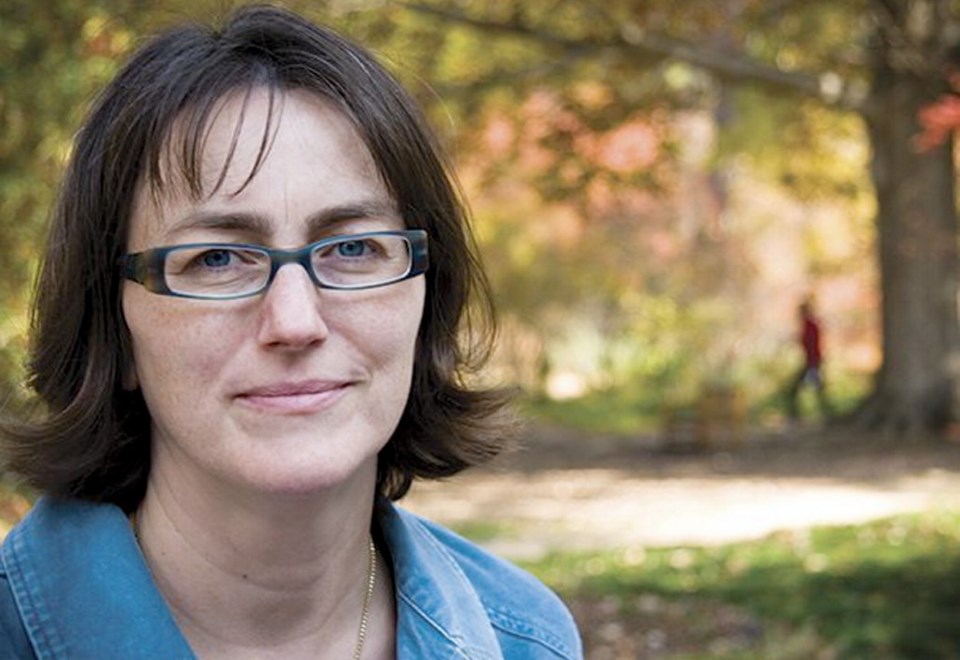The classic comic strip Love Is … would carry some surprise endings if Barbara L. Fredrickson were writing it. Her decades of research into positive emotions has led her to some unsentimental conclusions. Among them, that love is … not lasting … not unconditional … not exclusive.
But Fredrickson, director of the Positive Emotions and Psychophysiology Laboratory at the University of North Carolina at Chapel Hill, defines love more broadly, meaning it’s not as elusive as some of us think. She also credits love with nourishing our minds and bodies much more than romantic notions of it suggest.
Research shows the experience of love is measurable in cardiac vagal tone, the subtle variability in our heart rate. In Love 2.0: How Our Supreme Emotion Affects Everything We Feel, Think, Do and Become (Hudson Street Press), Fredrickson shares the tools to let us experience more love. Here’s an edited transcript of our conversation.
Question: How do you define love?
Answer: I’m defining love as any micromoment in which we share a positive emotion with another person — soulmate, sister or stranger. It’s marked by a biobehavioural synchrony that unfolds across two bodies and brains at once. You’re not only sharing a feeling, but also body movement, like nonverbal behaviours, and there’s a mirroring of biochemistry and neurofirings. There’s a mirroring in what you can see and also what is unseen but can be detected with different scientific measures.
Q: What is cardiac vagal tone, and how does that play into love?
A: It reflects the functioning of what’s called the vagus nerve, the 10th cranial nerve. It connects the brain to the heart and to other organs. We measure its effective functioning by looking at a very subtle form of arrhythmia in the heart, a healthy form. It’s basically reflected by a pattern of a slightly increasing heart rate while you’re breathing in, relative to a slightly decreased heart rate while you’re breathing out.
Vagal tone is viewed as pretty stable, like your height at adulthood. But it sets people up for being physically healthier, not just in terms of cardiovascular health but in the way their bodies regulate glucose and the immune response. In addition, it’s associated with better psychological functioning, a better ability to regulate attention and emotions and better ability to connect with other people. So it’s actually central to what psychologists call the social engagement system.
People with higher vagal tone — higher is better — experience more positive connection in daily life, and they get more out of our meditations that are designed to teach skills for connecting. But learning skills for connecting also raises vagal tone. It’s a positive feedback loop. That’s how these loving connections can really drive you toward health and better functioning.
Q: How is love underrated in pop culture?
A: I think first about how it’s overrated. Meaning that we put the bar so high and think it’s this exclusive lightning-bolt moment. My research lowers that bar. You actually can experience love in any interaction.
If you take the definition of micromoments of connection, that kind of love is underrated any time we think, “Oh, I can get what I need from just texting someone.” We’re not sufficiently valuing in-person contact. Technically, it doesn’t have to be face to face. We can be supportive and connective over the phone — it’s real-time sensory connection. But it can’t be offline, where you record something and someone listens to it later. That doesn’t carry the full benefits of shared positive emotions or shared positivity resonance, which requires echoing back and potentially amplifying.
Q: Is romantic love overrated?
A: People sometimes think that if they don’t have a romantic relationship, they have no love in their life. If you believe that strongly, it becomes a self-fulfilling prophecy. This new perspective of what love is is extraordinarily hopeful and helpful.
Q: What is the most critical deficit in regard to love?
A: Technology is a huge barrier. But also, people can’t experience these micromoments unless they feel safe. Loneliness and depression and anxiety are enough to make people feel unsafe when they interact with other people.
If we feel in some ways we’re inferior to people, [that] is usually an illusion — there isn’t some rank of who’s better. And if we allow ourselves to see that and not make social comparisons, that can make us feel a lot safer and more open.



